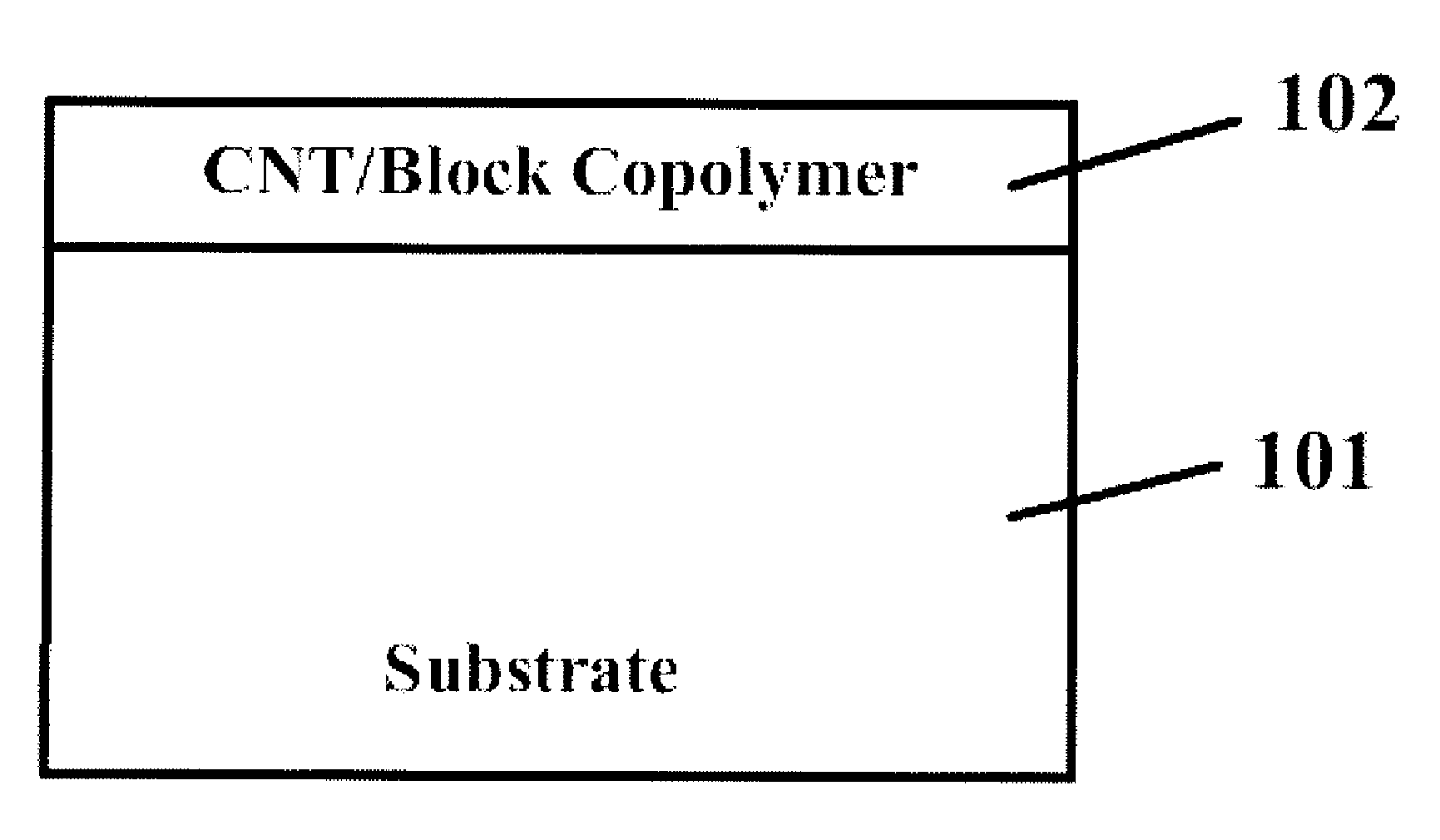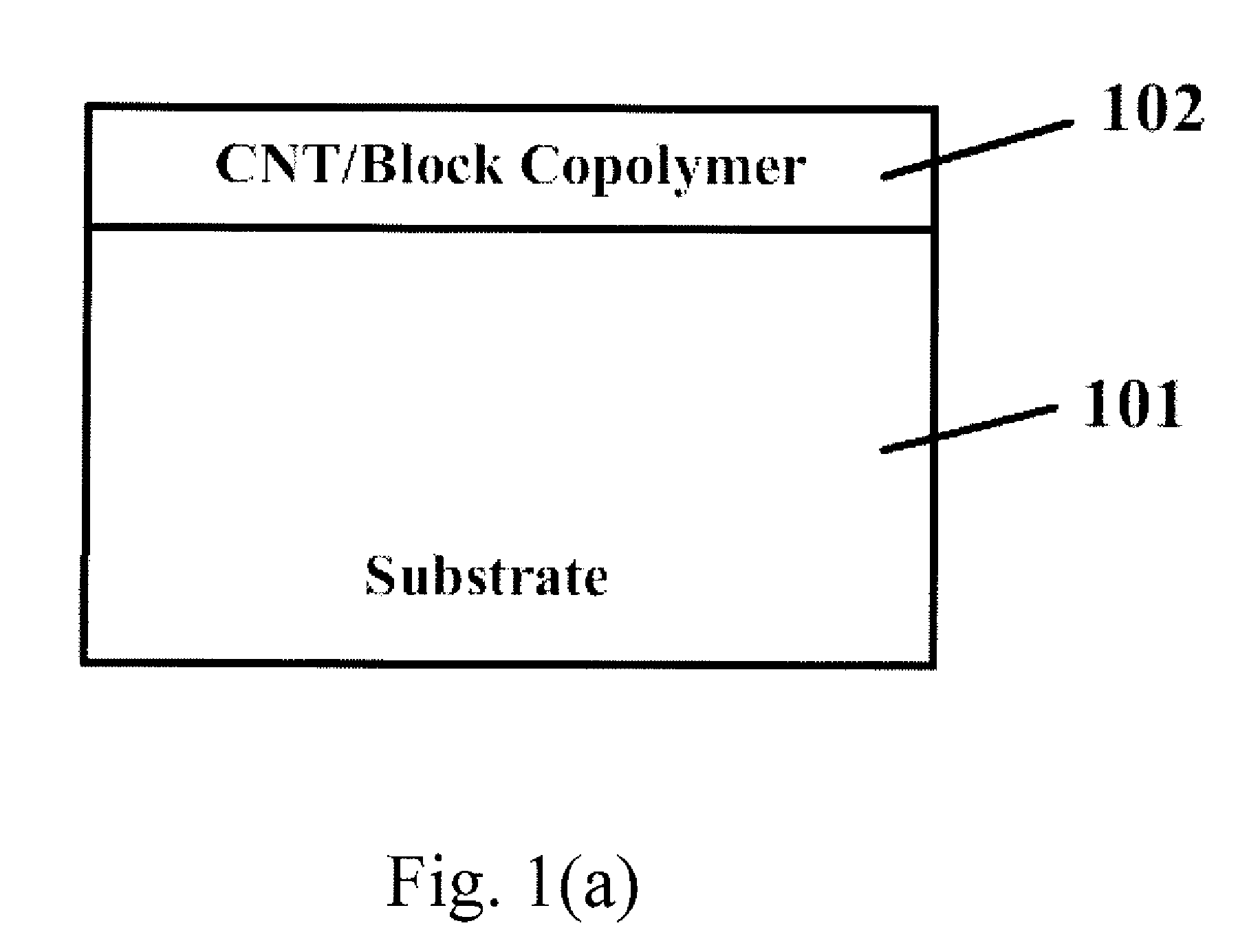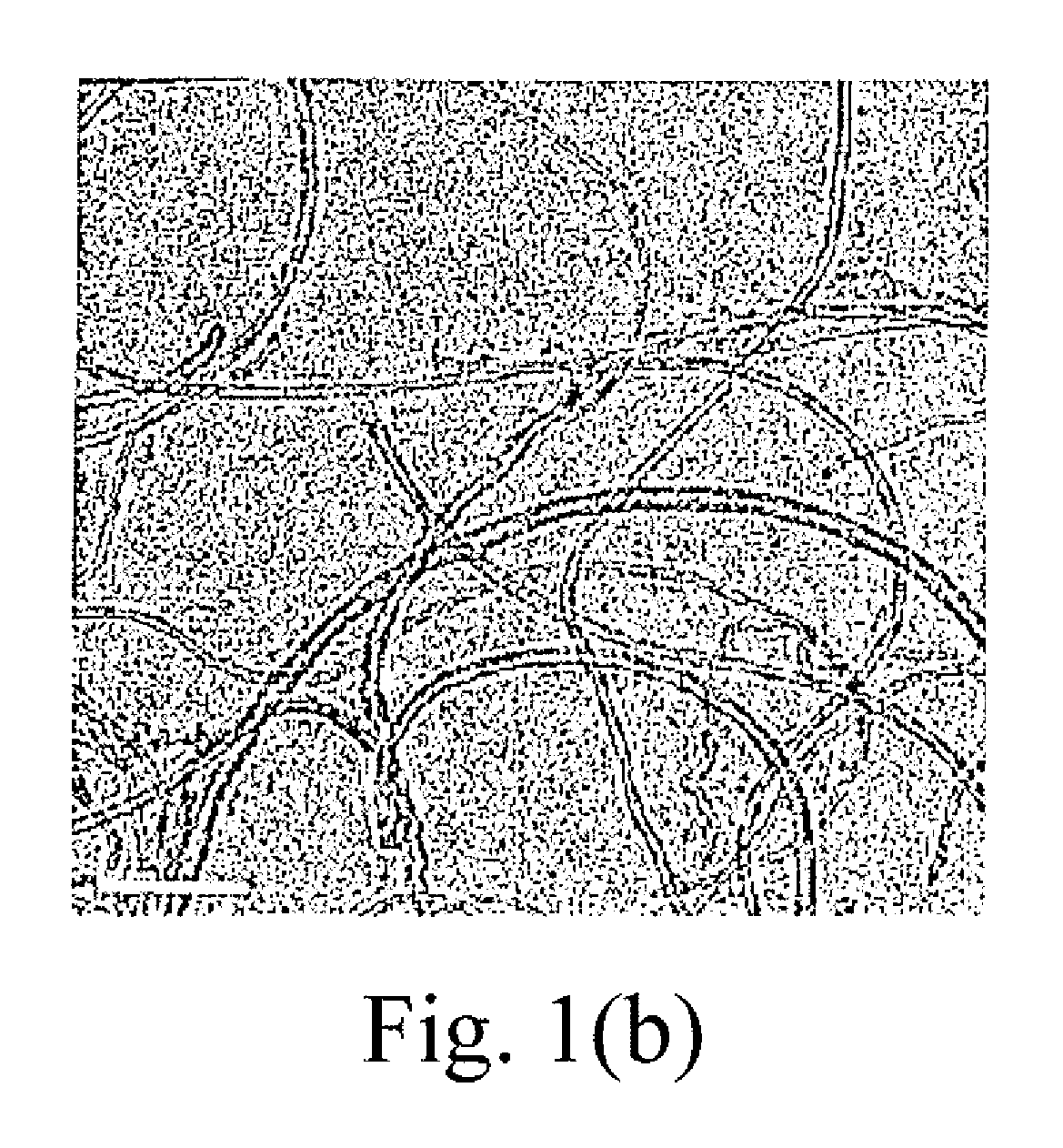Dispersions of carbon nanotubes in copolymer solutions and functional composite materials and coatings therefrom
a technology of carbon nanotubes and copolymer solutions, which is applied in the direction of synthetic resin layered products, tyre parts, vehicle components, etc., can solve the problems of reducing electrical conductivity, mechanical strength, and/or poor quality dispersions, and limiting application of cnt's
- Summary
- Abstract
- Description
- Claims
- Application Information
AI Technical Summary
Benefits of technology
Problems solved by technology
Method used
Image
Examples
examples
[0046]The following non-limiting Examples serve to illustrate selected embodiments of the invention. It will be appreciated that variations in proportions and alternatives in elements of the components shown will be apparent to those skilled in the art and are within the scope of embodiments of the present invention.
Components for an Exemplary Block-Copolymer CNT Dispersion
[0047]Poly(3-hexylthiophene-block-polystyrene) (P3HT-b-PS), a diblock copolymer, was synthesized according to the procedure disclosed in Mihaela et al. Polymer, 2005, 46, 8582-8586, which is incorporated in its entirety herein, with the P3HT block having a 98% head-to-tail regioregularity. This block copolymer is readily soluble in chloroform, toluene, and tetrahydrofuran (THF). Gel permeation chromatography (GPC), measurement using polystyrene as a standard, indicates a number average molecular weight Mn of 23000 dalton with a polydispersity of Mw / Mn=1.3. The composition of P3HT-b-PS was estimated to contain 34.1...
PUM
| Property | Measurement | Unit |
|---|---|---|
| Temperature | aaaaa | aaaaa |
| Fraction | aaaaa | aaaaa |
| Time | aaaaa | aaaaa |
Abstract
Description
Claims
Application Information
 Login to View More
Login to View More - R&D
- Intellectual Property
- Life Sciences
- Materials
- Tech Scout
- Unparalleled Data Quality
- Higher Quality Content
- 60% Fewer Hallucinations
Browse by: Latest US Patents, China's latest patents, Technical Efficacy Thesaurus, Application Domain, Technology Topic, Popular Technical Reports.
© 2025 PatSnap. All rights reserved.Legal|Privacy policy|Modern Slavery Act Transparency Statement|Sitemap|About US| Contact US: help@patsnap.com



